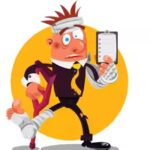From unexpected accidents to natural disasters, homeowners face various risks that could result in property damage or loss. When such unfortunate events occur, filing a home insurance claim becomes the necessary step to get the assistance needed to recover.
In this article, we’ll guide you through the process of filing a home insurance claim after a loss, ensuring that you’re well-prepared and aware of what to expect.
Understanding your home insurance policy
Before filing a home insurance claim, it’s crucial to review your policy and understand the coverage details specific to your situation. Each policy may differ in terms of what is covered and what is excluded. Familiarize yourself with the policy language and make note of any limitations or deductibles.
It’s also essential to understand the types of losses that are covered by your insurance policy. Common types of losses include fire damage, water damage, theft, vandalism, and natural disasters. Knowing the specific coverage can help you determine if your claim is eligible.
Lastly, be aware of any additional coverage options you may have, such as personal property replacement, loss of use coverage, or additional living expenses coverage. These additional coverages can provide financial support in certain situations and can be invaluable after a loss.
Steps to take immediately after a loss
When faced with a loss, it’s important to act swiftly and take the necessary steps to ensure your safety and protect your property. The following steps will help you navigate the immediate aftermath of a loss and set the foundation for your insurance claim.
First and foremost, ensure that everyone involved is safe and out of harm’s way. If necessary, contact emergency services for immediate assistance. Once everyone is safe, take steps to mitigate further damage by securing your property. For example, if there’s a leak, shut off the water supply or cover damaged areas with tarps to prevent additional water intrusion.
Next, document the damage or loss by taking photographs or videos. This visual evidence will be invaluable when filing your insurance claim. Make sure to capture the extent of the damage from multiple angles and include close-up shots to highlight specific areas of concern. Remember to document both the structural damage and any damaged personal belongings.
After documenting the damage, make a detailed inventory of the damaged or lost items. Include descriptions, purchase dates, and approximate values if possible. This inventory will help you provide accurate information to your insurance company and expedite the claims process.
Documenting the damage or loss
Once you have ensured everyone’s safety and documented the damage, it’s time to gather additional evidence to support your insurance claim. This evidence will play a crucial role in the approval process and help you receive a fair settlement.
If there were any witnesses to the incident, gather their contact information. Their statements can provide additional support for your claim. Additionally, keep track of any conversations or correspondence with contractors or repair professionals. These professionals can provide expert opinions on the extent of the damage and the necessary repairs.
Remember to keep all receipts and invoices related to repairs, temporary accommodations, or any other expenses incurred due to the loss. These documents will serve as evidence of your financial losses and help ensure you receive proper reimbursement.
Contacting your insurance company
After documenting the damage and gathering evidence, the next step is to contact your insurance company to initiate the claims process. Most insurance policies require prompt reporting of losses, so it’s important not to delay this step.
When contacting your insurance company, be prepared to provide them with all the necessary information they will require. This includes your policy number, the date and time of the loss, a brief description of what happened, and the extent of the damage or loss.
During this initial conversation, ask your insurance company about any specific forms or documentation they require to process your claim. This will help ensure that you provide all the necessary information in a timely manner, avoiding any potential delays in the claims process.
The home insurance claim process
Once you have reported the loss to your insurance company, they will assign an insurance adjuster to handle your claim. The adjuster will review your policy, assess the damage, and determine the appropriate coverage and settlement.
The adjuster may schedule an inspection of your property to assess the damage firsthand. During the inspection, be prepared to provide access to all affected areas and answer any questions the adjuster may have. Cooperation and transparency are essential during this stage of the claims process.
After the inspection, the adjuster will review the evidence and documentation you provided, along with any additional information they gather. They will then determine the coverage and settlement amount based on your policy’s terms and conditions.
Working with an insurance adjuster
Effective communication with your insurance adjuster is key to ensuring a smooth claims process and maximizing your settlement. Here are some tips to help you navigate this stage:
- Be responsive: Promptly respond to any requests for additional information or documentation from the adjuster. Delays in providing information can prolong the claims process.
- Be organized: Keep a record of all communications with the adjuster, including dates, times, and the content of the conversations. This will help you stay organized and ensure you have a detailed history of the claim.
- Be thorough: Provide the adjuster with all the necessary documentation and evidence to support your claim. This includes photographs, videos, inventory lists, receipts, and invoices.
- Be proactive: If you feel that the adjuster’s assessment is insufficient or if you disagree with their determination, don’t hesitate to voice your concerns. You have the right to request a review or provide additional evidence to support your claim.
Common mistakes to avoid when filing a claim
When filing a home insurance claim, it’s important to avoid common mistakes that can potentially hinder the process or result in a lower settlement amount. Here are a few mistakes to watch out for:
- Delaying the claims process: Promptly report the loss to your insurance company to avoid any potential coverage issues or delays.
- Underestimating the extent of the damage: Ensure that you document and report all damages accurately to receive proper compensation.
- Discarding damaged items prematurely: Keep all damaged items until the claims process is complete. Your insurance company may require evidence of the damaged property.
- Accepting the first settlement offer without question: Review the settlement offer carefully and consider seeking professional advice if you are unsure about its adequacy.
Tips for maximizing your home insurance claim
To maximize your home insurance claim, consider the following tips:
- Review your policy regularly: Familiarize yourself with the coverage details and any changes to your policy to ensure you are adequately protected.
- Maintain thorough records: Keep records of all repairs, expenses, and communications related to the loss. This documentation will support your claim and help secure a fair settlement.
- Seek professional advice if needed: If you have concerns about the claims process or the settlement amount, consider consulting with a public adjuster or an attorney specializing in insurance claims.
- Stay informed: Understand your rights and obligations as a policyholder. Familiarize yourself with your state’s insurance laws to ensure you are treated fairly throughout the claims process.
Conclusion
Filing a home insurance claim after a loss can be a daunting task, but understanding the process can alleviate stress and ensure you receive the assistance you need. By reviewing your policy, documenting the damage, communicating effectively with your insurance adjuster, and avoiding common mistakes, you can navigate the claims process with confidence. Remember to keep thorough records, stay organized, and seek professional advice when necessary. With these tips in mind, you can maximize your home insurance claim and expedite your recovery after a loss.


